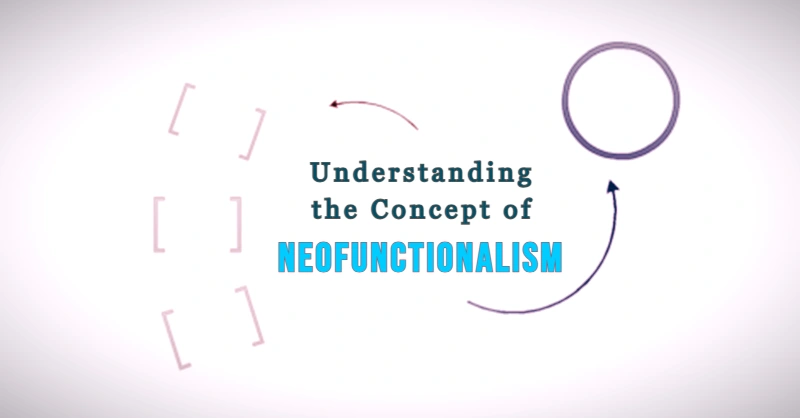Neofunctionalism is a self-critical strand of functional theory in international relations that seeks to expand the intellectual scope of functionalism while maintaining its theoretical core. Let’s understand the concept of neofunctionalism and examine its strengths and limitations.
What is Neo-functionalism? Examine Its Strengths and Limitations

What is the Concept of Neofunctionalism?
Neofunctionalism is a theory of regional integration that downplays globalization and re-introduces territory into its governance. Neo-functional theory is generally linked to the political and economic goals as well as the first European integration theory developed by Ernst B. Haas in 1958.
Neo-functionalism describes and explains the process of regional integration with reference to how causal factors interact with each other.
Neofunctionalism arose in the mid-1980s to revive the theory of structural functionalism. A revival of interest in Parsons’ work, first in Germany and then in the USA, led to the emergence of neo-functionalism. The primary goal was to integrate certain aspects of functionalism and build a ‘hybrid’ that combines the strong points of the other perspectives so that one can deal with so-called conflicting issues in a balanced way.
Parsons abandoned his synthetic orientation, and neofunctionalism can be seen as an effort to resume that orientation.
Neofunctionalism Strengths and Limitations
Neo-functionalism can be seen as an ‘effort’ or ‘tendency’ to overcome the problems of functionalism: such as Anti-empiricist bias, Anti-individualism, Idealism, Conservatism and Antagonism to change.
Neofunctionalism works with a descriptive model of society that considers it to be made up of elements that form a particular configuration in their interaction with others. It focuses on social change and differentiation processes within social, cultural, and personality systems.
Neofunctionalism devotes almost equal attention to action and order. Neofunctionalism accepts the traditional Parsonian focus on personality, culture and social order. It preserves the structural functional interest in integration, not as a fact, but as a social possibility.
In general, neofunctionalism introduced two important innovations:
First, it avoided the technical self-determination approach that suggests technical bureaucracy will determine and dominate the integration process.
Secondly, the deliberate design of institutions by neo-functionalists would lead to greater integration, not just in the classical functionalist sense of transferring the “lessons of benefits” of technical self-determination from one domain to another but through the “extended logic of sector integration.”
Neo-functionalists suggest that the instrumental motives of political elites are perhaps the most important factor in determining the role that nations play in the process of integration or disintegration.
Despite its strengths, the new functional approach has some limitations.
Neofunctionalism is criticized mainly because of its Europe-centric character. It is an integral part of a modern pluralistic, industrial democratic political system such as that found in Western European countries, although this has been sufficient so far. If it had been applied to Third World countries, it would have faced great difficulty and great failure.
In neofunctionalism, society can be studied objectively and still prevail. Revolution is definitely not considered. Conflict is acknowledged but is still in the secondary category. It is difficult to judge how much successful integration should be achieved.
Despite its ‘hybridization’, drawing on different theoretical perspectives, neo-functionalism is not a ‘distinct paradigm’. Doubts and skepticism prevail about the future of neo-functionalism.
Neo-functionalism does not provide a convincing explanation of 1979-1995 cross-Taiwan Strait relations though it successfully predicted the path of European integration.
Conclusion: The Concept of Neofunctionalism
Neo-functional theory sees regional integration as a gradual and incremental process driven by functional needs, the desire to solve common problems and positive outcomes of cooperation, rather than by pre-planned or political motives.
Neofunctionalism emphasizes that even small steps toward integration can lead to a more interconnected and unified world. This theory aims to expand structural functionalism by addressing its limitations, while maintaining its fundamental theoretical aspects.



